Stanley Tang and Walker Williams: Start Small
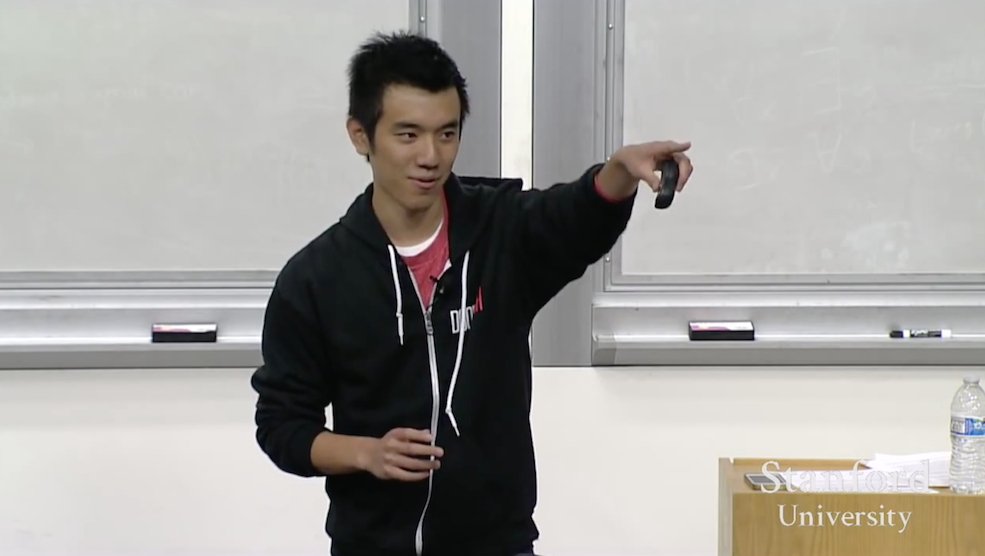
Stanford course CS183B: How to start a startup . Started in 2012 under the leadership of Peter Thiel. In the fall of 2014, a new series of lectures by leading entrepreneurs and Y Combinator experts took place:
Second part of the course
First part of the course
- Sam Altman and Dustin Moskovitz: How and why to create a startup?
- Sam Altman: How to form a start-up team and culture?
- Paul Graham: Illogical startup ;
- Adora Cheung: Product and Honesty Curve ;
- Adora Cheung: The rapid growth of a startup ;
- Peter Thiel: Competition - the lot of losers ;
- Peter Thiel: How to build a monopoly?
- Alex Schulz: An introduction to growth hacking [ 1 , 2 , 3 ];
- Kevin Hale: Subtleties in working with user experience [ 1 , 2 ];
- Stanley Tang and Walker Williams: Start small ;
- Justin Kahn: How to work with specialized media?
- Andressen, Conway and Conrad: What an investor needs ;
- Andressen, Conway and Conrad: Seed investment ;
- Andressen, Conway and Conrad: How to work with an investor ;
- Brian Cesky and Alfred Lin: What is the secret of company culture?
- Ben Silberman and the Collison Brothers: Nontrivial aspects of teamwork [ 1 , 2 ];
- Aaron Levy: Developing B2B Products ;
- Reed Hoffman: On Leadership and Managers ;
- Reed Hoffman: On the leaders and their qualities ;
- Keith Rabois: Project Management ;
- Keith Rabua: Startup Development ;
- Ben Horowitz: Dismissal, promotion and reassignment ;
- Ben Horowitz: Career advice, westing and options ;
- Emmett Shire: How to conduct interviews with users;
- Emmett Shire: How to talk to users in Twitch ;
- Hossein Rahman: How hardware products are designed in Jawbone;
- Hossein Rahman: The Design Process at Jawbone.
Stanley Teng: Thank you for inviting me! My name is Stanley and I am the founder of DoorDash . It is great to be here, because not so long ago I was also sitting in your place. In 2014, I graduated from the Computer Science Department with my co-founder Andy. For those of you who do not know what DoorDash is, I will explain: we are engaged in delivery to small cities of our country.
')
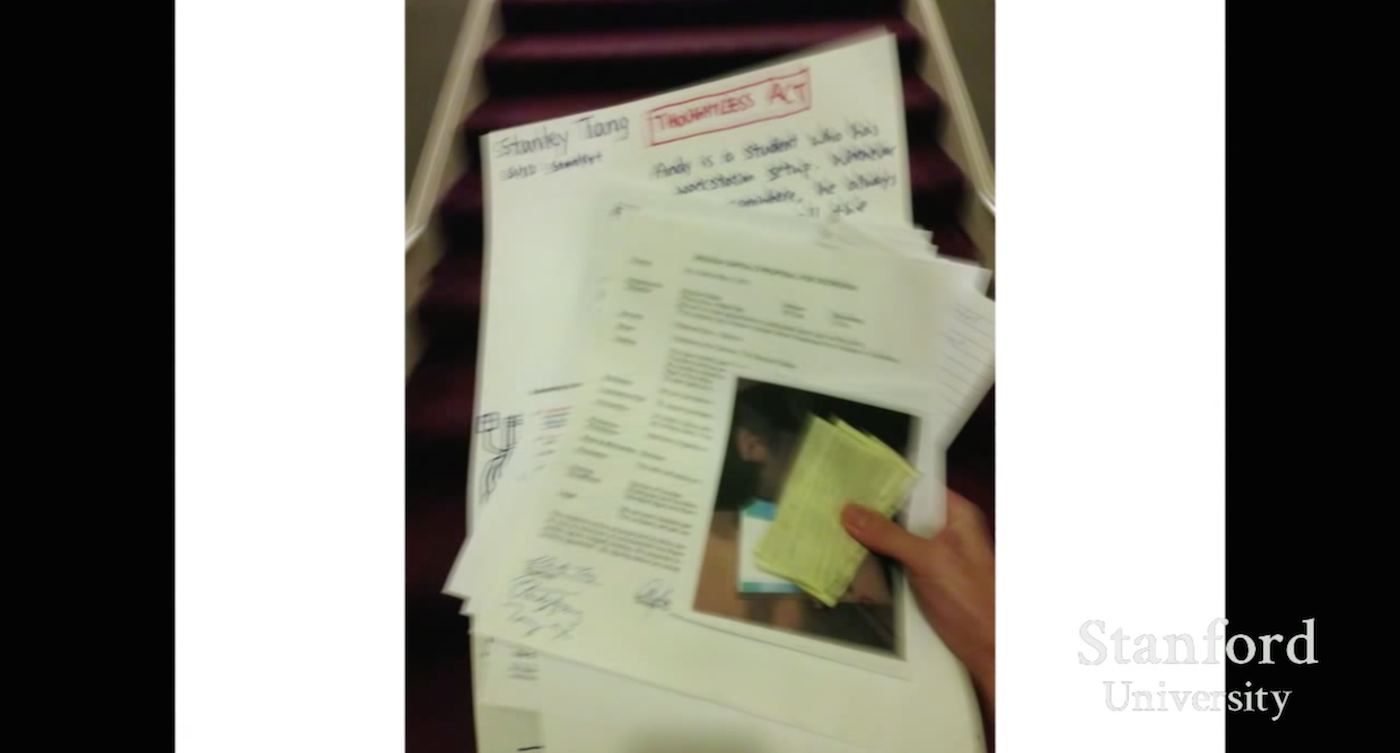
I would like to start my speech with a photo I took a few months ago. This photo was taken at night, on the day when we received the first funding. In the photo I am already returning to my home, while I lived on campus.
I made this photo, because suddenly I realized how ridiculous the set of papers that I hold in my hand looks. Here is my homework done, tax return forms (it was April, and I had to fill them in), a yellow piece of paper is a penalty for speeding, and right under it lies a $ 15 million contract that I just entered into with Sequoia. This all shows how insane was our journey, which began at Stanford and ended with the launch of a startup. And today I want to share this story with you.

It all started two years ago in an almond cookie store. It was the third course, the autumn quarter at Stanford University. At that time, I was very passionate about creating technology to help small businesses. I discussed with Chloe, who at the time owned the Chantal Guillon cookie shop in Palo Alto, the project we were working on, and also found out what problems she had to face as she worked.
During that conversation, Chloe first raised the issue of delivery problems. I remember how she showed me an incredibly thick notebook, in which, page by page, delivery orders were painted, and she was forced to refuse to many customers, because she could not physically fulfill them all.
She had no drivers, and it came to the point that she began to carry orders in person. Perhaps, I can call this moment a key one, we realized in which direction to move.
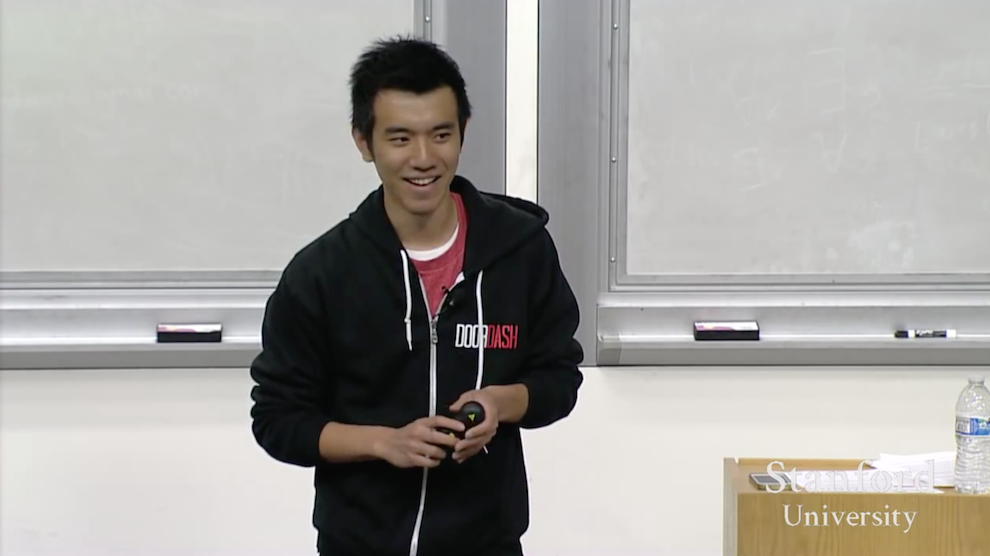
Over the next few weeks, we met and talked with the leaders of about 150-200 small companies, told them about the idea of the delivery service, and they, agreeing with us, said that it was a good idea: “You know that we do not have the infrastructure responsible for delivery, and there are no effective solutions to the problems that arise, which causes some difficulties. ”
We were very surprised, because the delivery service is a common thing: why has nobody thought of this before? We are definitely missing something, right? We thought that people had already tried to do something similar in the past, but it failed due to lack of demand.
We asked ourselves: “ How can we test this assumption? ". But at that time we were just a group of students, we had no trucks, no infrastructure, or anything like that, and we couldn’t just take and build a delivery company for one night. It was necessary to come up with something.
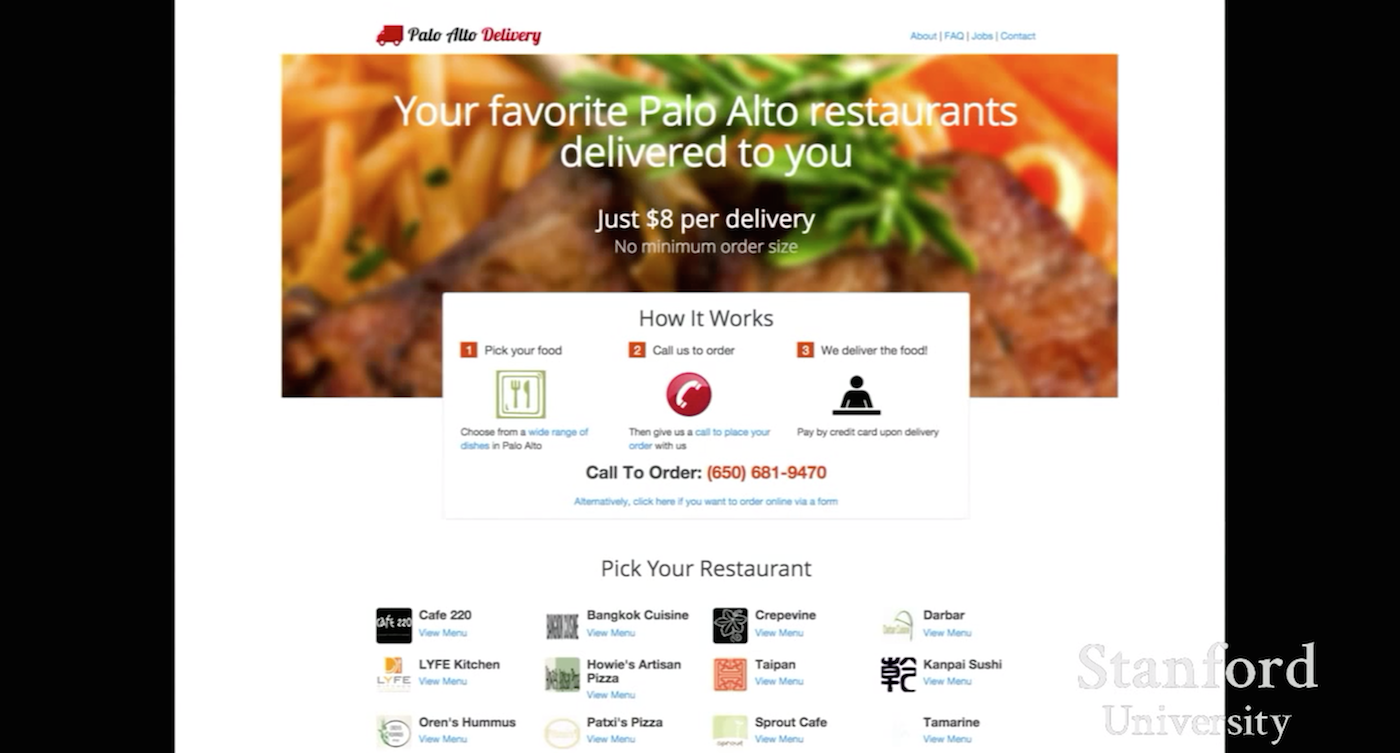
It was decided to conduct a simple experiment with the delivery of restaurant food. We spent part of the day creating a simple marketing landing page. On the Internet I found PDF files from the menu of several restaurants in Palo Alto, and at the end of each of them we entered our personal mobile number and fixed them on our page. And that's all.
We launched the page and called the site PaloAltoDelivery.com. So she looked at that time [slide above]: she was very simple, clumsy, and to be honest, we didn’t expect anything from her - we just launched it. We wanted to check whether we would receive phone calls, and if there were enough of them, then perhaps the idea of a delivery service is worth developing.
So, we launched the page, did not expect anything from it, and suddenly, we received a phone call. Someone called us and wanted to order Thai food! We thought: "This is a real order, we need to do something." We sat down in cars and decided, since we are not busy with anything now, we can drop by to buy Thai noodles, and at least try ourselves in the role of deliverers. So we did.
We delivered the order to a guy, as I remember, living on the end of Alpine Road. We asked him how he found out about us and what he was doing. He handed me his business card, and it turned out that he was a philologist, as well as the author of the book “Weed the People”. That was our very first delivery. It was the “best-worst” delivery you can imagine.
And the next day we received 2 more calls. A day later - five, then seven, and then they became 10. And soon we began to gain momentum on campus thanks to PaloAltoDelivery.com. Just think - it was just one page on which you could view the menu and our phone number .
It was not a professional site, but calls and orders continued to flow. At that moment, we realized that we had felt something. If people are ready to put up with the shortcomings of our service, it means that they really need it.
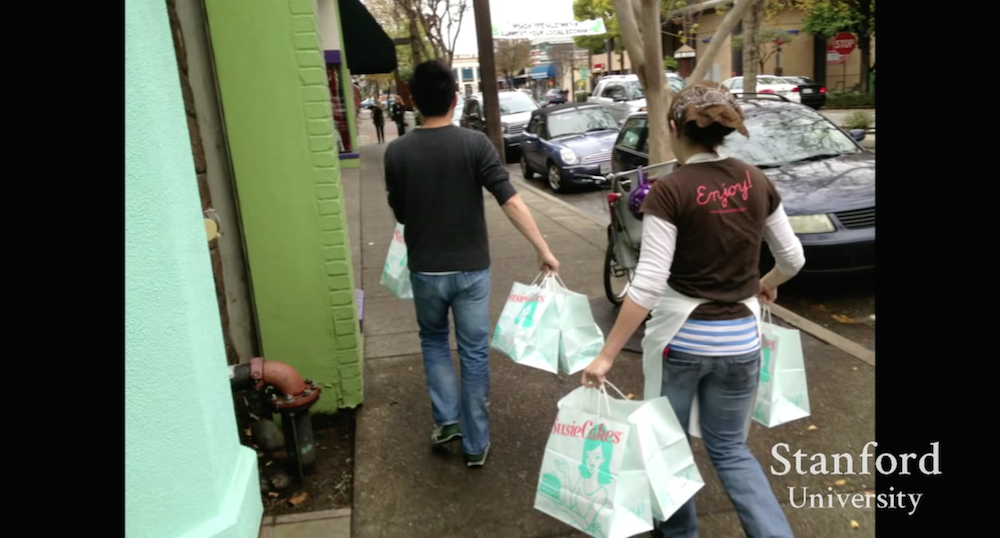
I think another important point is the fact that we launched the project in less than an hour. We didn’t have drivers, we didn’t know how it all worked out, we didn’t have any basic knowledge, and we didn’t spend six months trying to create an abstruse delivery system - we didn’t have any of this. We just started the project because we needed to test the idea in action, run it, and see if people need it. Absolutely normal, if at first everything is done in haste.
There is an expression in YC, it is often repeated, and it sounds like this: “ Start small .”
At first, we were freight forwarding drivers - we went to lectures, and after that - we delivered food. We were customer support - sometimes we had to answer calls right in the middle of lectures. In the afternoon, we went down University Avenue and handed out flyers so that as many people as possible could know about DoorDash.
We did not have any dispatching systems, so we had to use Square to collect money from customers. We used Google Doc to track order status, and Apple's Find My Friend to keep track of where our drivers are.
And so on, as often happens when you bring together the first solutions that come to mind and try to make them work. In terms of earnings, we grew so fast that Square suspected us of money laundering and closed our account. Imagine what it looked like: we received small amounts of money for $ 15- $ 20, and orders came at a very fast pace. Fortunately, my co-founder Tony worked at Square, he wrote a couple of emails to his friends, and everything was resolved.
Starting from the small, you can become an expert in your business: for example, working as a courier allows you to understand the work of the delivery service as a whole. We took advantage of this opportunity and communicated with customers and restaurants, we were engaged in dispatching and sent drivers to the addresses themselves, which helped us to understand the work and algorithms for sending drivers.
We independently engaged in customer support and received first-hand feedback. I remember that in the first few months, when we first started, at the end of each day we manually sent an email to each new customer asking how the first delivery went and how he found out about us. We personified every letter, for example, if you ordered chicken skewers from Oren's Hummus, we wrote something like, “Oh, and we like Oren's Hummus. Did you like your kebab? And how did you find out about us? ” Clients liked this attention, and we received feedback on our work.
I remember a case, it happened while studying at YC, we just left a meeting with one of our partner restaurants. We once heard that a place had opened, somewhere on University Avenue called Cream, they were selling ice cream there, and we were going to go try it. Suddenly, unexpectedly, our co-founder from the office sends us a message with the text: “We urgently need drivers, we have too many orders,” and we argued for about 10 seconds about whether we should go eat ice cream or go to deliver orders. Of course, we went to take orders , the growth motivation of a startup played its role, and we could go for ice cream another time.
Now we are working in other cities, and we need to think about automating processes, building delivery systems and deciding how to meet demand — that is, using all these fancy technological pieces. But they are absolutely unimportant at the start. When you are just starting, it is only important to launch the idea, “get off the ground” and find your niche in the market .

To somehow summarize, I’ll note that I’ve learned three things while doing DoorDash. First - try your ideas in practice, you need to check them in action, that is, to conduct a real experiment. The second thing - start a startup quickly. It took us less than an hour to start, and just one selling page on the web.
And the last thing - to start gradually and small - it is in the order of things. In fact, this is one of your biggest advantages, which will help you understand in which direction to develop further when you have a large client base. And only then, when you succeed, you can go and taste the very ice cream. Thanks for attention!
How did your very first customer find out about you?
Tang: The very first? I have no idea. We just started working in Palo Alto and did not conduct any advertising campaigns.
I suppose that he simply typed “Palo Alto Delivery” into the search bar. After that, of course, we did some kind of marketing. I remember that I sent an e-mail to the hostel's mailbox, and then the information about us was sold out of word of mouth. This state of affairs reflects how necessary such a service was if people talked about us and made orders with a terrible user interface of the site, its terrible design and everything else in the same spirit.
I suppose that he simply typed “Palo Alto Delivery” into the search bar. After that, of course, we did some kind of marketing. I remember that I sent an e-mail to the hostel's mailbox, and then the information about us was sold out of word of mouth. This state of affairs reflects how necessary such a service was if people talked about us and made orders with a terrible user interface of the site, its terrible design and everything else in the same spirit.
Why no one could offer such a successful service to you?
Tang: Looking back, I think that mobile phones played a big role in this. Today, everyone has a mobile phone in his pocket, and, seeing this trend, we thought that it was possible to develop a delivery system that would be entirely based on mobile communications.
A system in which there is no infrastructure and delivery vehicles. Instead of hiring full-time drivers or buying cars, why not connect independent contractors to it, and only give out orders when they have time. Here is a vision of all this, we then arose: to do everything with the help of mobile phones.
A system in which there is no infrastructure and delivery vehicles. Instead of hiring full-time drivers or buying cars, why not connect independent contractors to it, and only give out orders when they have time. Here is a vision of all this, we then arose: to do everything with the help of mobile phones.
Did you work for the sake of ideas at the time, or did you just want to make money?
Tang: At that time, we simply wanted to create technology for a small business, and the delivery project was born from an experiment with a selling page.
It was a pure experiment, we waited for nothing, and jumped at the idea when everything unraveled itself. Yes, and logistics is something that we have always been fascinated with. Transport logistics - the perfect combination - this is both delivery and assistance to small businesses.
It was a pure experiment, we waited for nothing, and jumped at the idea when everything unraveled itself. Yes, and logistics is something that we have always been fascinated with. Transport logistics - the perfect combination - this is both delivery and assistance to small businesses.
You first launched a website for mobile devices?
Tang: We started with a classic Landing, the creation of which took an hour of our life.
What makes DoorDash stand out among its competitors?
Tang: At first, the presence of consumer demand was not a problem, as indeed now. We just try to find what people need, and aim to meet their needs. In the initial stages, competitors do not play a special role.
How long did it take you to become an official company?
Tang: We started the project in January 2013, and finished the same summer with YC. We became a company when we decided to go through YC.
Are you planning on delivering something other than food?
Tang: When we started DoorDash, there was always the task of helping small businesses and finding out what could be done for every entrepreneur, no matter if it was a cookie store owner, a furniture store or a restaurant.
It was, is and will be our goal for a long time. At the moment we are engaged in the restaurant trade, with a view to corporate growth, but ultimately, we would like to continue working in this niche.
It was, is and will be our goal for a long time. At the moment we are engaged in the restaurant trade, with a view to corporate growth, but ultimately, we would like to continue working in this niche.

Sam Altman (Sam Altman): The next speaker name is Walker Williams (Walker Williams) - he is the founder of Teespring . He worked with YC for about a year and a half. I almost refused him, because his idea looked like complete nonsense, but now they are earning hundreds of millions of dollars. It's great that in the end we work together. Walker is also going to talk to you about how to start with tasks that are inherently non-scalable.
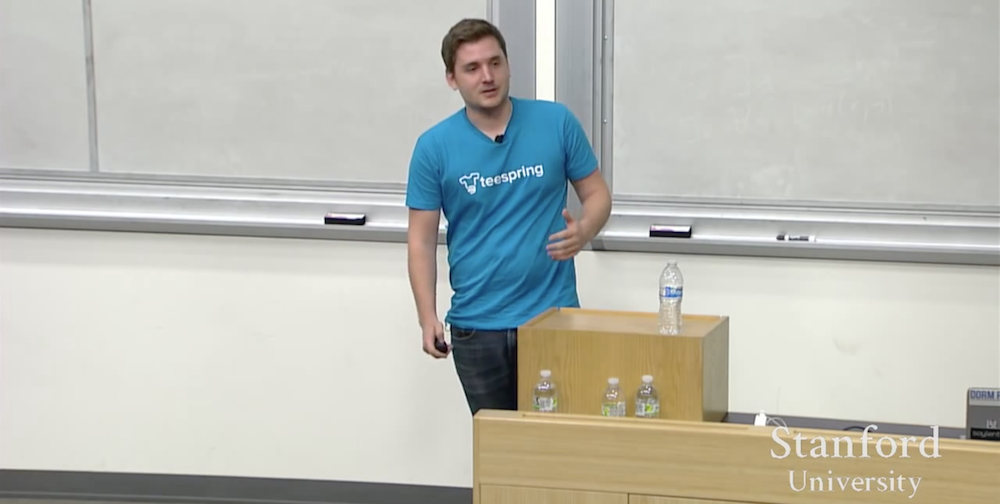
Walker: Thank you guys for inviting me! My name is Walker and I am the founder and CEO of Teespring. For those who do not know what Teespring is, I’ll tell you: we are an e-commerce platform that allows entrepreneurs to start producing branded clothing without risk and without investment. Today, the company employs 180 people, and every day we deliver tens of thousands of products to customers. I would like to talk with you about one of the main advantages that you have as a start-up, starting to work on a small company.

I believe that small companies are fundamentally unstable, do not exist for very long, and they do not have millions of customers. Such companies fall apart over time for a variety of reasons, but they allow us to understand growth strategies.

Today I would like to draw your attention to three points. The first is the search for your first customers. The second is the transformation of these customers into regular customers. The third is finding your niche in the market.

Regarding the search for first customers: first, you must understand - there is no universal way to lure a customer. Everyone, including me, starting his own business, was looking for such a magical way: an approach that pays off instantly, or a profitable partnership that will help to overcome all the way from zero to a million.
But the reality is that the overwhelming majority of companies never find anything of the kind, I was convinced of this by talking to their directors. Wonderful takeoffs do not happen, like unicorns. Most of the companies that seem to have found this wonderful way actually got their very first customers with incredible difficulty. Let me tell you a story about a ridiculously unviable business.
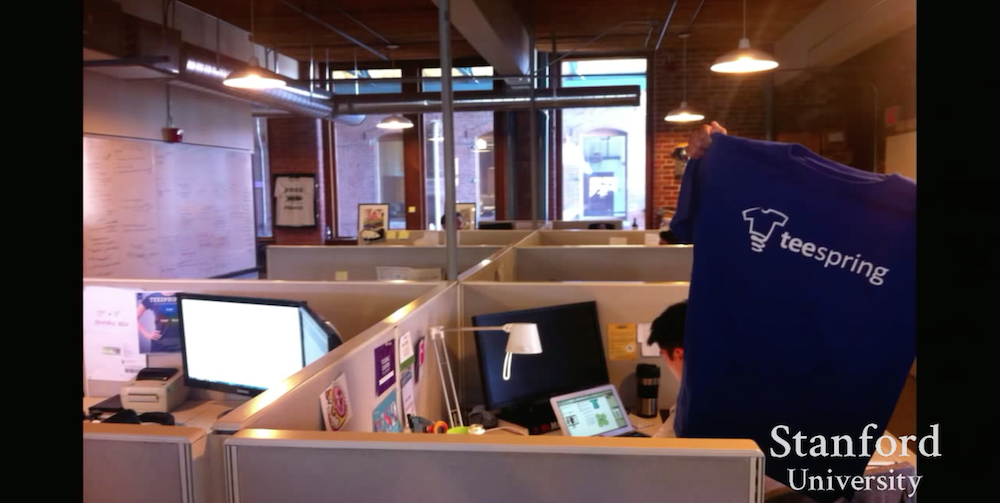
This was what Teespring looked like in 2012 [PowerPoint slide]. When we started our own business, everything went from bad to worse. At the start, we spent days at various meetings, we were forced to offer a free design and spent a lot of time refining it. We had to independently produce goods, make advertising: and all in order to sell 50 shirts to a non-profit organization and get $ 1000 profit.

Anyone looking at this would say, give up, guys, this is a terrible idea. But as time went on, the first customers began to appear. You have to learn: when you first create a company that launches a completely new product, its sales will initially be bad .
Because you have no idea how to influence your customers, because no one has done anything like this before you. No one can tell you how to sell your product, and you can't read reviews either. Therefore, always attracting first customers becomes the most difficult stage.

Your responsibility as a founder is to do everything possible to attract them. Ways for each company their own. Most often, the founders should make every effort and spend their personal time, a lot of time, to attract customers to the company.

This means a lot of things: you need to send 100 e-mails a day, “sit” on the phone, make as many calls as you can, or search for customers through a network such as Stanford or Y Combinator.
You must do everything to get your first customer. I constantly draw an analogy with the rise of a boulder uphill. At first you think that this is a smooth hill, but in fact it turns out that this is a steep mountain, and it’s not so easy to roll a stone for the first few inches. But as you move forward, the slope becomes less steep, it becomes easier to roll a stone, and suddenly you discover that you are already at the top, and the boulder begins to roll down from the mountain itself.

Working with those first customers, you should not focus only on making a profit. Do not expect to earn thousands of dollars in one hour. Although the incredible story of Stanley makes us think about the existence of unicorns, yet, for most of us, the first customers will demand tremendous commitment and great love - this is necessary to create a company.
I just want to warn you: do not give away your product for free. There are many exceptions to this rule, but in any case, reducing the cost of a product or giving it away for free is a very unreliable strategy, which I would not recommend. You must make sure that buyers appreciate your product. And you know that people relate differently to free and paid goods, and sometimes this can inspire you with a false sense of peace: "Oh, we have so many customers, now we can definitely start selling."

What to do after you get your first customers? How to turn them into regular customers, such customers, who would tell and recommend your product to everyone? The company, which has been successful growth, just engaged in attracting such people. The easiest way to make them recommend your product is to do something nice, something unusual and unusual - to leave them a pleasant impression.

The easiest way to do this as early as possible (this method is unreliable and does not scale well) - just talk to customers. You will always be told about this - this is a kind of basic rule of the Y Combinator: talk to your customers .
I can not stress how important it is to spend a lot of your time on such conversations. You have to do it all the time, every day and as long as possible.
Today in Teespring, I still track our email, so I’ll notice if someone makes a mistake in the word “support” or registers a non-existent address. I still serve about 10-20 clients per day and spend several hours every night reading each tweet - maybe I overdo it, but there's nothing wrong with that.
I looked at every Teespring community because, after listening to customers who have had experience working with you, you will get the most complete picture of your product, especially in the early days. The product, released in its original form - most likely, is not exactly what consumers expected from it, and the sooner you find out, the sooner you will begin to develop.

There are three things to consider when dealing with customers.
The first is to work as an employee of customer support. While Teespring did not earn $ 130- $ 140 thousand per month, my co-founder Evan and I assumed the responsibilities of customer service.
At such a moment, there will be a desire to pass this stage faster - it is morally difficult. Even today, when I open our customer service portal, I begin to overwhelm with emotions and my stomach just turns out, because it is very bad to speak with so many people who speak ill of your product. It is very painful to realize that what you loved and what you put in so much effort was done wrong or was misunderstood by someone. But it is very important to go through this stage and understand what needs to be added and what should be corrected.
The second point is that you need to keep in touch not only with the clients on whose orders you work, but also with those whose order was executed, but they refused to deal with you in the future. This category of customers is constantly forgotten in pursuit of new customers. But you need to make sure that your customers have a good impression of working with you, otherwise they will simply go to competitors.
When a client leaves, you need to contact him and find out why he acted this way, since your personal intervention may influence his decision. Sometimes people just need to know that you care, and things will change for the better. And even if the client does not want to go back, you will take into account the mistakes that caused him to leave, and correct them in order to avoid a repetition of such a situation in the future.
And finally, the last thing that interests me the most is social networks and communities. You need to know what people say about your brand. You should try to find out if someone has any bad impressions, and what people say about it, to correct the shortcomings.

Problems are inevitable. You can not create a perfect product, sometimes something breaks, sometimes something goes wrong. It does not matter. It is important to always move forward, and sometimes it is worth going the extra mile just to make one customer happy.
A single slanderer who has bad impressions of your work is able to discourage the desire to work with you from ten regular customers. He just needs to say something like: “You don’t have to work with these guys for such and such reasons,” and that’s all, it can turn all progress backwards.
I can give you an example when in the first days we became entangled in a large number of orders. We confused colors a little, chose the wrong shirt size, and the cost of the order was half of our earnings for the month. We knew that we were wrong, and that the client would be unhappy, and there was a great temptation to lie to him and say that everything was in order. But the reality is to bite the bullet and tell the truth . Although in such situations, customers are very disappointed, as a rule, they remain to work with you and become the most loyal regular customers.

The last thing I would like to talk about is finding your market share. By this I mean that the product that you launch on the market with 100% probability will not lead to the growth of the company [in its original form], therefore in the first days it becomes your task to bring it to mind so that it becomes competitive as soon as possible.

To do this, as true engineers, you will want to create an excellent platform, write code without bugs and make the project scalable. You do not need to write code “with crutches”, because soon because of this you will have a huge amount of “technical debt”. But at the same time, the speed of its execution prevails over the purity and scalability of the code.
As an example, I can give one of the latest cases. We have a couple of corporate clients, some of the large non-profit organizations who said: “We really like your service, but you don’t have these very important functions, so we will not use it”. We reviewed the ideas proposed by them and considered what their implementation would cost us, we were not sure that such functions would be used by someone else, but we really wanted to try to implement the ideas.
My co-founder Evan, our CEO and a million times better developer than me, made several calculations and came to the conclusion that if everything was done correctly, it would take about a month to launch the functionality.
– , , . , , , . , . , – , , , - .

, . , , . , . 100 , 1000. , (Twitter Fail Whale – ).
Teespring , «». . , , , . .

, – . – . – , .

, , , . , , .
– , , . , , – , .
Why textile printing, because in this area a lot of competitors?
: – . , , .
« , ?» . . - , .
, - «Remember the Bar» , , , . , , , , , .
, , , , , . , , . , , , , , , .
« , ?» . . - , .
, - «Remember the Bar» , , , . , , , , , .
, , , , , . , , . , , , , , , .
Non-profit organizations - is this your biggest share of clients?
: , – , . 1000 , . YouTube, Reddit , .
[ Translation of the next lecture by Justin Kahn ]
Source: https://habr.com/ru/post/283800/
All Articles